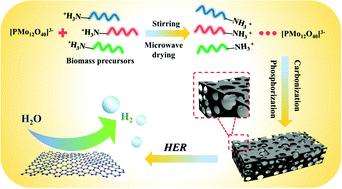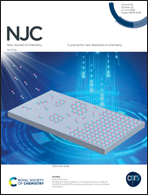Synergistically coupling P-doped Mo2C@N, P dual-doped carbon-nanoribbons as an efficient electrocatalyst for the hydrogen evolution reaction†
Abstract
Developing non-noble and high-performance electrocatalysts towards the hydrogen evolution reaction (HER) in both acidic and alkaline media remains a stern challenge. Herein, the composite of P-doped Mo2C and a hierarchically ultrathin N, P-doped carbon nanoribbon network (P-Mo2C/NPC) is proposed through a facile simultaneous phosphating-carbonization strategy, in which biomass and phosphomolybdic acid (PMA) were employed as the carbon precursor and metal precursor, respectively. The doping of the electronegative P heteroatom increases the active sites, weakens the Mo–H bond strength in the HER, and facilitates the electron transfer. Consequently, the synthesized catalyst exhibits good intrinsic activity towards the HER, and shows low overpotentials of 172 mV and 118 mV to afford the current density of 10 mA cm−2 in 0.5 M H2SO4 and 1.0 M KOH electrolyte, respectively. Furthermore, the synthesized catalyst can sustain 24 h with stable performance, which is greatly favorable for industrial applications. This work may shed some light on the rational design and manufacture of HER electrocatalysts with high compatibility to different electrolytic environments.



 Please wait while we load your content...
Please wait while we load your content...